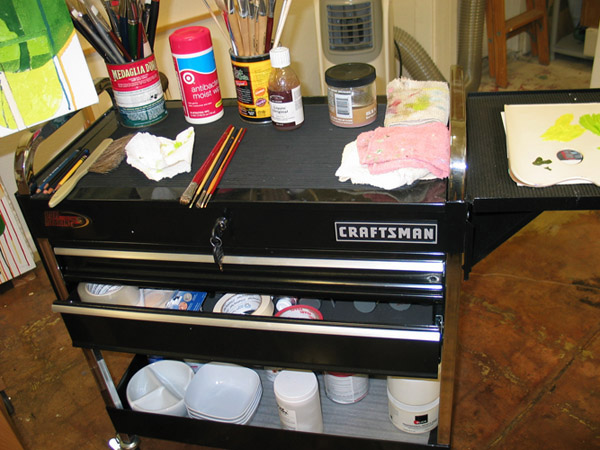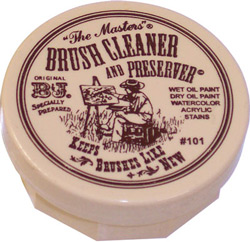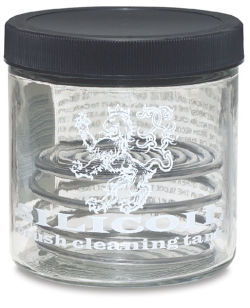The other day I made a quickie demo video for my niece. She’s interested in getting into oil painting and a lot of people that want to start in this medium can get easily discouraged if they don’t know a few things first. I don’t want that to happen to her, so I threw something together. It’s not great, but it’s something.
It’s on YouTube, but it’s really just for her. It’s after we already had a conversation about it. I should probably add a bit of text on the video posting for other people in case they view it. Or maybe answer questions.
Some people get intimidated when thinking about using oil paints. I’ve been asked about it a number of times and here I am writing about it again, but I don’t want to assume that people don’t know what they’re doing, nor do I want to come across like I am some kind of master of oil painting. I’m not. I’m not a teacher or anything. And I don’t want to bore anyone either.
All I can do is talk about how I do it. Everyone is different, and I’m sure there’s some “correct” way to paint and clean up and all that shit, but I’m self-taught. However, I’ve been working in oils for thirty years.
Wow, it’s weird to think about that. That’s a long time, isn’t it?
Anyway, I was saying that, and this is just my opinion, that people get intimidated about starting oil painting like it’s some kind of ominous medium that they won’t be able to conquer. I, for one don’t know how people work in acrylic because it dries so fast. Acrylics are not my bag at all.
Yes, oils stay wet forever practically, but I think the number one barrier as to why people don’t try, and/or fail, is because they don’t know how to care for the materials. I really believe that is the reason. Working with the actual paint is not the reason knowing they stay wet. It’s all trial and error. You just figure out the paint as you use it. You get to know how to manipulate the stuff by pushing it out of the tube and brushing it onto the canvas. It’s not all that different from acrylics in that regard.
It’s the cleaning up afterward and taking care of your brushes that stops a lot of people, and many are afraid of the smell. The toxicity. It’s not all that horrible really. It’s not like it was in the 1800s. There are no raw powdered pigment dust in the air to inhale or harsh turpentine needed. Yes, there’s some lead in a few paint colors, but not enough to harm you. You can wear gloves and a mask if it really freaks you out that much. I personally don’t think all that’s needed. You can contain the cleaners in a jar. There are non-toxic cleaners. Use a fan and open a window is you’re that paranoid or if you have a baby in the room. That is my view.

I have had some of my brushes some twenty-five years. I take good care of them. I clean them well, but it’s not all that difficult. Sometimes it’s time-consuming, but it’s not as hard as one might think.

Those disinfecting wipes are a godsend. They’re great for the final wipe-off of your brush. I try to get as much paint off my brush on the painting itself and on the palette paper before I clean them off. I use disposable paper pads. I’m not so great at being a recycler with a permanent palette. I used to have a glass palette, but I found that I actually wasted paint that way. With the pads, I’m able to transfer unused colors to a new sheet after mixing and wiping off the brush. It’s also crazy faster.

I find that a disinfecting wipe is good enough to use between colors a lot of the time and I don’t even have to dip the thing in the turp at all. I use Turpenoid Natural. It’s non-toxic, but I’m not so sure how non-toxic it is because, to me, it still has a bit of a turp smell to it. However, I keep it in a Silicoil jar so, it’s contained. I only open it to fully wipe off the color. I use a rag between brushing it across the coil. You can see what I do in the video. I make sure no color comes off on the rag before I consider it “clean.” And I can leave the brush there forever before soap cleaning it, as long as it’s free of color, that is.

Of course, when I finally soap clean it, which is typically between paintings, plenty of color still comes off. I’ll wash it until not a trace of color appears, then condition it. Then I will shape the brush with spit. Yes, I said spit. But I also said I have fantastic brushes that I’ve had for decades.

You can also keep that same Silicoil jar for over a year before correctly disposing of it. Don’t pour it down the sink, ever. The color will settle to the bottom of the jar and the cleaner, clearer bit of the solution will rise to the top of the coil. Don’t pour the solution much past the top of the coil. That’s overkill.

Oh, and by the way, you might see some Liquin in some of those pictures, but I don’t use it anymore. That shit is toxic. I rarely use it. However, it does get oils to dry quite a bit faster and is good for building layers. It thins out the oil paint and makes it somewhat transparent. Like I said it a nice secret for building flat layers upon layers, especially if you’re playing with light.
More so now, I use this Gamblin stuff that works a lot like Liquin. Not exactly like it, but it smooths out the oils and makes them a dream to paint with.

Okay, so while typing all this, I know I’ve written about most of it before on some log post at some point in time, but here I am repeating myself, as usual.

